The Ultimate Guide to Mongolian BBQ and Traditional Cuisine: Khorkhog, Boodog, Buuz, and More
Contact us for travel suggestions
The Ultimate Guide to Mongolian BBQ: A Culinary Adventure
When you think of Mongolian barbecue, imagine fresh meat sizzling over hot rocks, fragrant smoke rising into the crisp mountain air, and friends and family gathering to share a meal under the endless Mongolian sky. This unique tradition is more than just good food — it’s a taste of Mongolia’s history, culture, and nomadic spirit. For those looking to dive into this world food experience, Mongolian BBQ promises an unforgettable feast for the senses.

Discover the Unique World of Mongolian Barbecue
Mongolian barbecue is more than just a cooking method; it’s a way of life. Rooted in Mongolia’s nomadic culture, this barbecue style evolved from the need to make delicious, hearty meals with simple ingredients in challenging environments. Each dish tells a story of survival and community. This guide explores famous dishes like Khorkhog, Boodog, and Buuz while providing tips on where to find authentic Mongolian barbecue — from traditional feasts to top-rated restaurants in Ulaanbaatar.
The Legend of bd’s Mongolian Grill: A Global Twist on Mongolian BBQ
You may have heard of bd’s Mongolian Grill, a popular restaurant chain that brings Mongolian-style barbecue to audiences worldwide. At bd’s Mongolian Grill, diners choose their ingredients and watch skilled chefs stir-fry them on a large, circular grill. Though traditional Mongolian BBQ is quite different, it’s a fun, interactive take on Mongolian barbecue. Here, you’ll discover the authentic techniques and flavors that inspired the bd’s Mongolian Grill concept.
Khorkhog: Mongolia’s Stone-Cooked Delicacy
Khorkhog is one of Mongolia’s most iconic dishes, offering a taste of traditional Mongolian BBQ. Prepared by placing meat (often mutton or sheep) into a large metal pot or bowl with vegetables and hot rocks, Khorkhog is both a meal and an experience. The chef carefully arranges ingredients like potatoes, carrots, and sometimes cabbage around the rocks, which are heated over an open fire. The rocks cook the food from the inside out, giving it a unique smoky flavor that’s hard to find in a regular dish.
The Ingredients and Cooking Technique Behind Khorkhog
The ingredients for Khorkhog are straightforward but packed with flavor. You’ll find mutton, potatoes, and carrots — basic ingredients that, together with the hot rocks, create a meal bursting with taste. The chef pours a small amount of water into the pot or bowl, allowing the ingredients to steam and tenderize as the rocks perfectly cook everything. Khorkhog is often served during family gatherings, as it’s a meal best shared with loved ones, adding to the warmth and enjoyment.
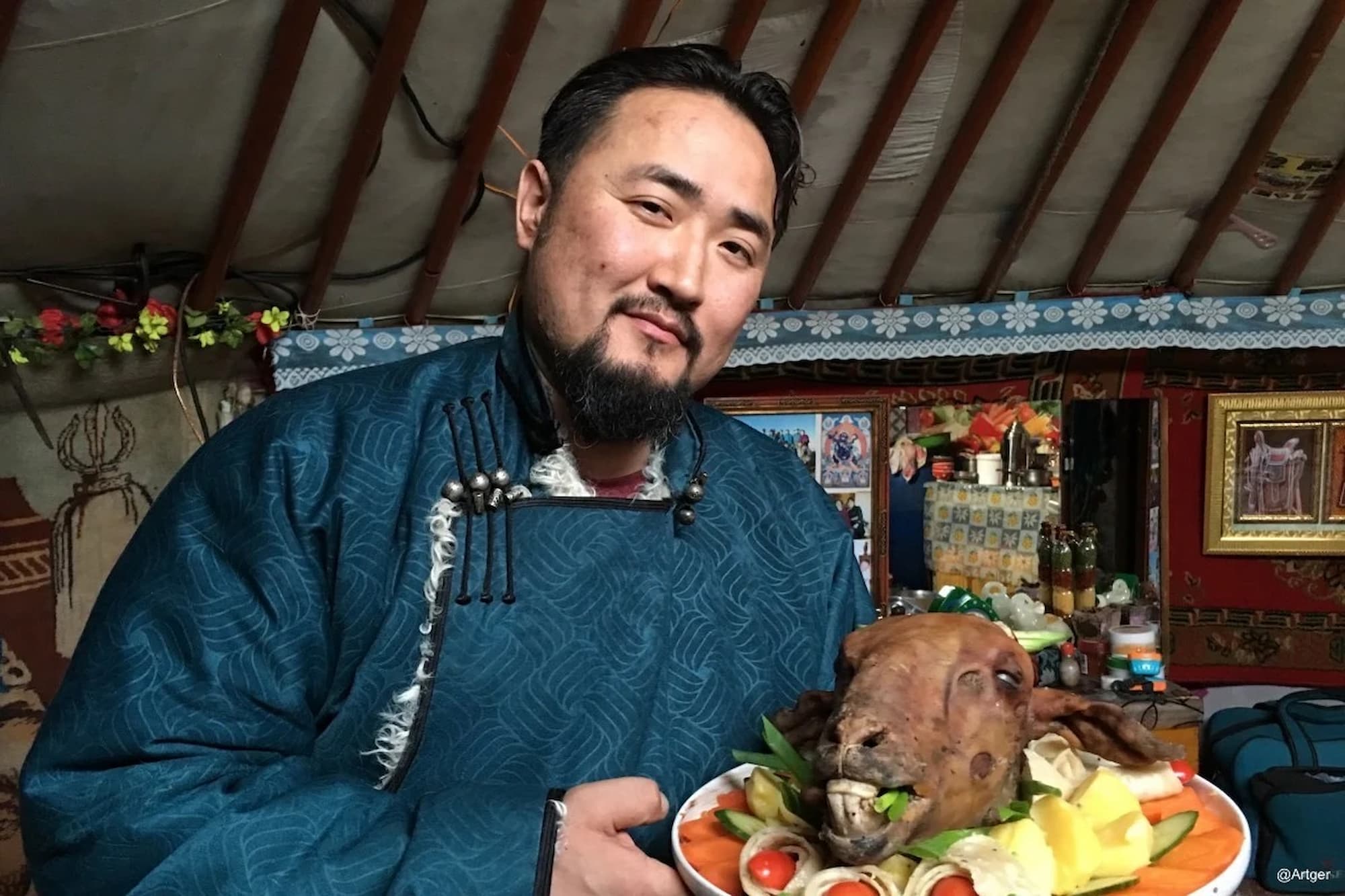
Boodog: A Whole-Animal Barbecue Experience
If you’re looking for an adventurous take on Mongolian BBQ, Boodog is a must-try. This traditional Mongolian barbecue involves cooking an entire animal — typically a goat or sheep — with hot stones on its skin. The result is an incredibly juicy and flavorful meal that’s as close to ancient Mongolian barbecue as possible. Watching a chef prepare Boodog is an experience; it requires skill, patience, and an appreciation for Mongolia’s nomadic roots.
The Art of Preparing Boodog: An Authentic Mongolian Barbecue
Seeing a chef prepare Boodog is something tourists won’t forget. The chef heats rocks and then carefully places them inside the animal’s skin to cook the meat from within. As the stones release heat, they create steam, infusing the meat with a smoky, rich flavor. Boodog offers a primal, satisfying taste and a glimpse into Mongolia’s unique way of creating good food in harmony with nature. Boodog is common in rural areas, where nomads still practice this traditional cooking method.
Buuz: Mongolia’s Beloved Dumpling
Buuz, Mongolia’s famous steamed dumpling, is a staple during Tsagaan Sar, the Mongolian Lunar New Year. Filled with seasoned mutton and sometimes vegetables like cabbage, Buuz is a warm, comforting food that’s widely loved. Buuz isn’t just a dish; it’s a symbol of family and celebration, representing the warmth and togetherness of Mongolian cuisine. Buuz offers a wonderful introduction to the flavors and traditions that define Mongolian barbecue culture for those exploring Mongolian food.
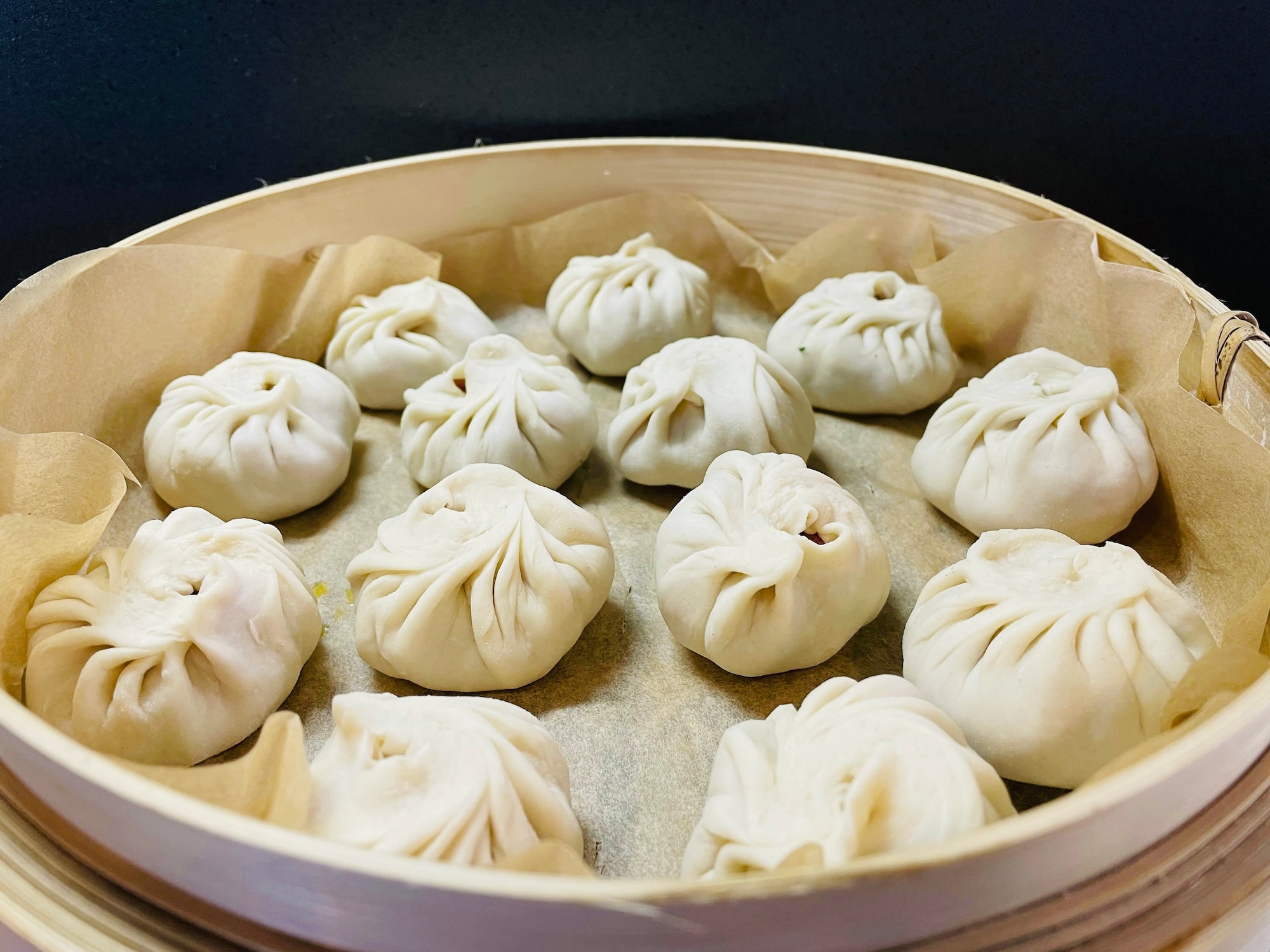
How Buuz Shaped Dumplings Around the World
As the Mongolian Empire expanded, the concept of dumplings spread far and wide. Different regions adapted Buuz into their styles, from Chinese dumplings to Russian pelmeni, making it a cornerstone of world food. The Mongolian Empire’s influence left a lasting impact on Central Asia and beyond, with each culture creating its version of these filled dough balls. Today, Buuz connects Mongolia to its past and other cultures through food.
Mongolian Buuz vs. Taiwanese Dim Sum: A Tasting Comparison
For a fun twist, why not compare Mongolia’s Buuz with Taiwanese dim sum? Though each has a unique flavor, both dumplings share Central Asian roots. Imagine a “Buuz vs. Dim Sum” tasting experience, where travelers can explore the similarities and differences between these two culinary favorites. The comparison highlights Mongolia’s influence across Asia and brings together food lovers worldwide.
Kazakh Beshbarmak: A Central Asian Influence in Mongolian Cuisine
Kazakh Beshbarmak is a traditional dish enjoyed by Mongolia’s Kazakh communities. Made from boiled meat and served over noodles, it’s a communal meal where family and friends gather to eat with their hands. Beshbarmak, meaning “five fingers,” embodies the close-knit, communal nature of Mongolian and Central Asian dining. For tourists, tasting Beshbarmak is a chance to explore the diverse influences that shape Mongolia’s food culture.
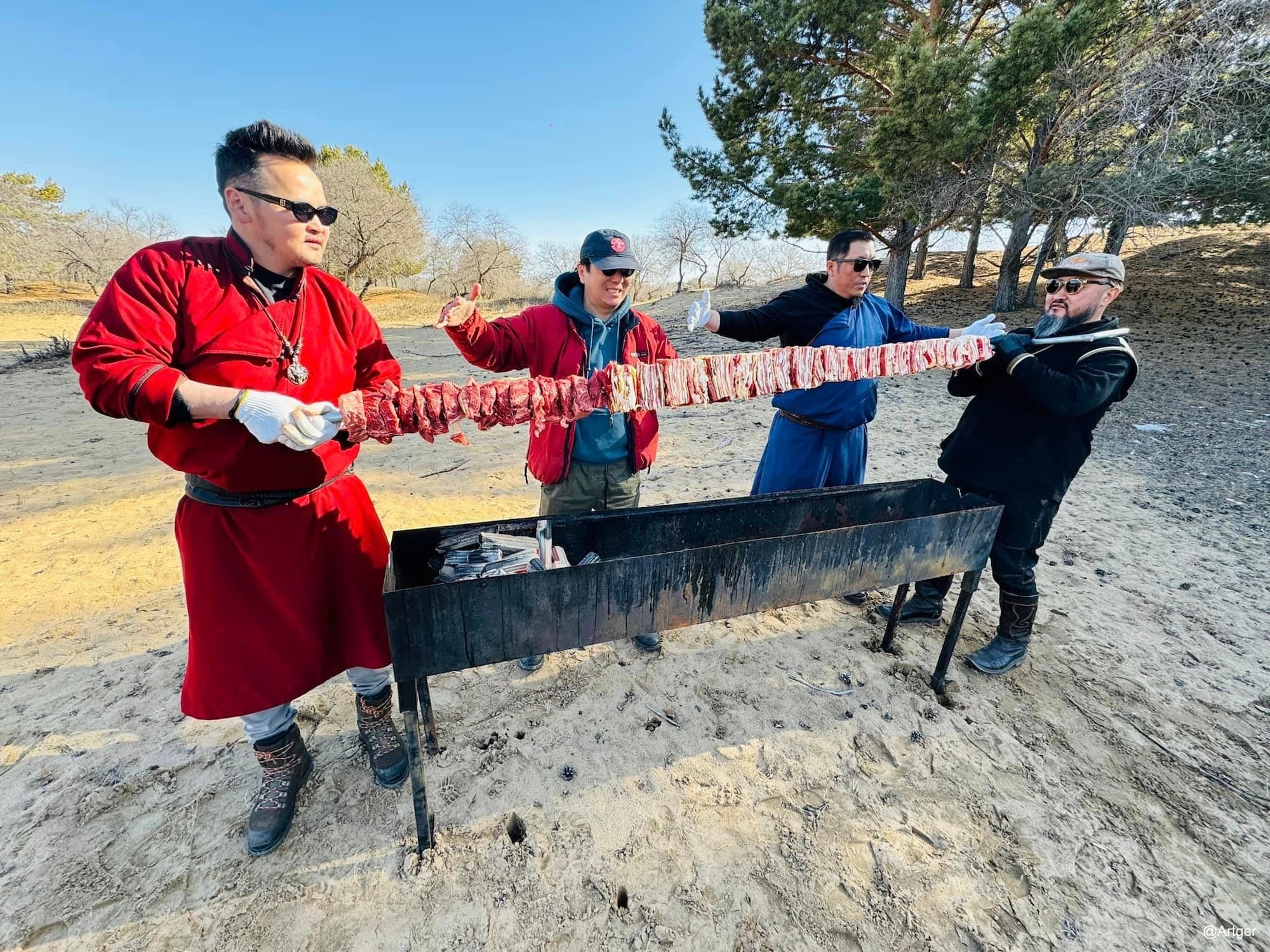
Sirnei: The Stir-Fried Meat Dish for BBQ Lovers
Sirnei is a popular dish in Mongolia. It's made with stir-fried beef or mutton, potatoes, and onions and is occasionally served with broccoli. It’s a quick, flavorful meal that highlights Mongolia’s love for hearty, simple dishes. Stir-frying the meat over high heat creates a crispy texture on the outside while keeping the inside tender and juicy. Sirnei is one of Mongolia’s go-to comfort foods and is perfect for anyone who loves good food that’s easy to prepare and packed with flavor.
Choosing the Right Fuel: Wood vs. Charcoal for Mongolian Barbecue
In traditional Mongolian BBQ, wood is often the preferred choice, imparting a rich, earthy flavor to the meat. Cooking over wood enhances the smokiness, creating a taste grounded in Mongolia’s landscape. Charcoal, however, is also popular in cities and can burn hotter, offering a convenient alternative for modern Mongolian barbecue setups. Both methods give travelers a taste of Mongolian barbecue’s diverse cooking styles.
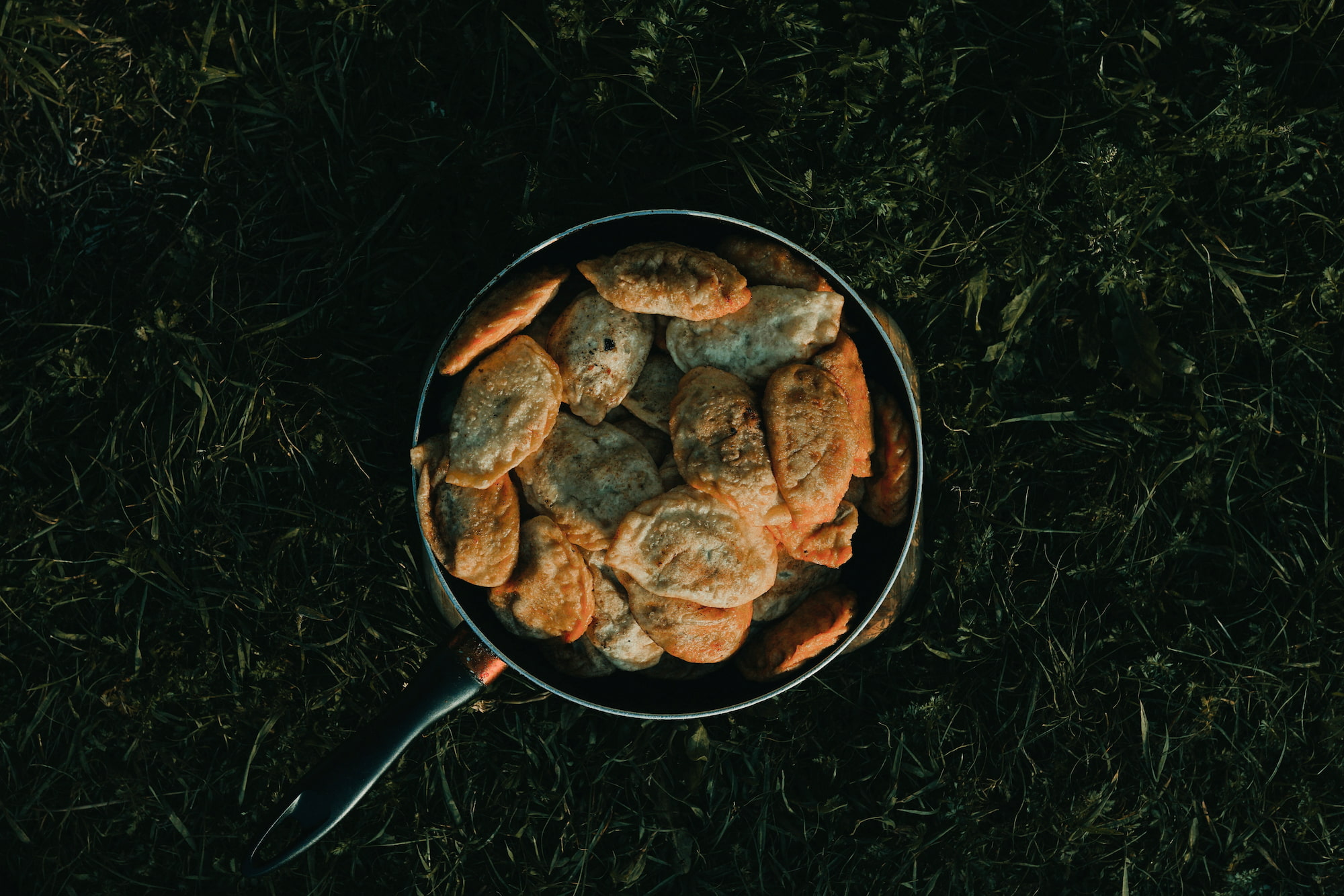
Finding Good Food and Mongolian BBQ in Ulaanbaatar
Ulaanbaatar, Mongolia’s capital, has several restaurants serving authentic Mongolian BBQ. For an unforgettable culinary experience, visit BD’s Mongolian Barbecue for its modern twist on Mongolian flavors, or head to Mongol Nomadic for a more traditional setup where you can witness nomadic-style dishes like Khorkhog and Boodog being made. From traditional dishes to creative modern takes, Ulaanbaatar's restaurants offer an array of good food that celebrates Mongolia’s culinary heritage. Many restaurants even incorporate ingredients like cabbage or broccoli, adding unique twists to traditional Mongolian dishes.
Where to Buy Ingredients for Your Mongolian BBQ
If you’re planning a Mongolian barbecue on your travels, Ulaanbaatar has many shops where you can buy fresh ingredients. Tomahawks BBQ Butchery is a great place to pick up premium cuts of meat, including mutton, pork, and even marinated options. You’ll also find a variety of sausages and vegetables to round out your meal. You can create your Mongolian barbecue experience under the wide-open skies with the right ingredients.
Traditional Mongolian Drinks to Pair with Your BBQ
To fully embrace the Mongolian barbecue experience, try pairing your meal with traditional Mongolian drinks. A cup of Airag (fermented mare’s milk) is a must-try for adventurous eaters, with a tangy flavor that complements the smoky richness of Boodog or Khorkhog. Alternatively, enjoy a warm bowl of Suutei Tsai (Mongolian milk tea) with your Buuz; this savory tea made with milk and salt is a comforting, earthy pairing highlighting Mongolia’s nomadic roots.
Transporting Your BBQ Gear and Ingredients Across Mongolia
If you’re heading into the wilderness for an authentic Mongolian barbecue, you’ll want to plan for transporting your gear and ingredients. Portable grills, charcoal, and fresh ingredients can be found in Ulaanbaatar and are easy to carry in a vehicle. Securing your barbecue setup ensures that everything arrives safely so you can focus on enjoying good food and the beauty of Mongolia’s landscape. Be sure to bring extra portions of vegetables, meats, and other ingredients, as you’ll want enough food to share with fellow travelers or nomads you meet along the way.
Embracing Mongolian Barbecue: A Taste of Nomadic Spirit
Mongolian barbecue is not just a meal; it’s a celebration of Mongolia’s resilience, history, and community. From the bold flavors of Khorkhog and Boodog to the comforting warmth of Buuz, Mongolian BBQ connects diners to the land and its people. This is world food in its truest sense — dishes born from the needs and traditions of nomadic life. As you savor these flavors, remember that you’re not just tasting food; you’re experiencing the spirit of Mongolia.
So, pack your bags, gather your ingredients, and prepare for a Mongolian barbecue adventure that will leave you with lasting memories of this remarkable country.
FAQs
- What is the difference between Khorkhog and Boodog?
Khorkhog is a stone-cooked BBQ in a pot or bowl, while Boodog involves cooking the meat inside the animal with hot rocks. - Where can I try traditional Mongolian barbecue in Ulaanbaatar?
Many restaurants in Ulaanbaatar serve authentic Mongolian barbecue, often prepared by skilled chefs, including Mongol Nomadic for a traditional feast and BD’s Mongolian Barbecue for a modern twist. - How is Mongolian barbecue different from Western barbecue?
Mongolian barbecue often uses hot stones or whole-animal cooking methods, giving it a unique smoky and primal flavor. - What makes Mongolian Buuz different from other dumplings?
Buuz is typically filled with mutton, reflecting Mongolia’s ingredients and traditions. Its history also connects it to other Asian dumpling styles. - Where can I buy barbecue supplies and ingredients in Mongolia?
Ulaanbaatar has several stores with fresh ingredients and BBQ supplies, making it easy to prepare your Mongolian barbecue.
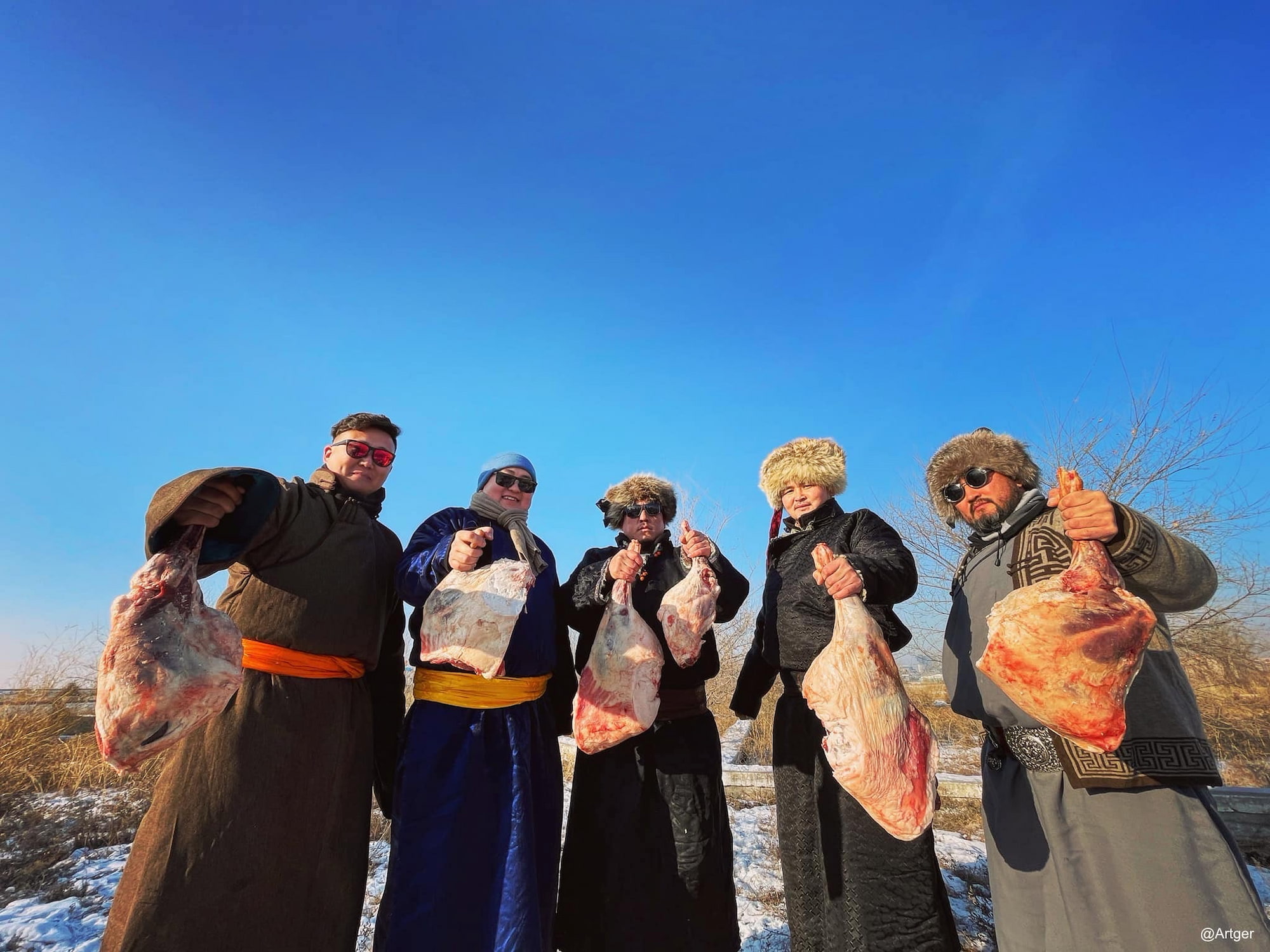
Author: Marla
 Mongolian BBQ
Mongolian BBQ